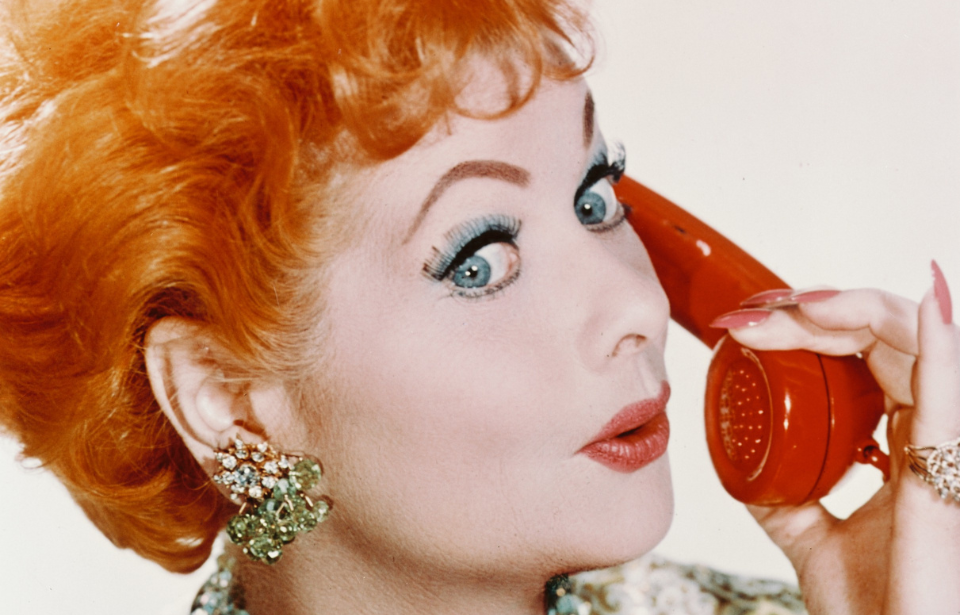
There’s a moment in I Love Lucy—one of many—where Lucille Ball bursts into a room in a ridiculous costume, caught mid-scheme, eyes wide with panic and mischief. The audience howls. Desi Arnaz stands beside her, shaking his head. Classic Lucy.
But behind the laughter that still rings clear after seventy years, the real story of I Love Lucy is far more complicated. It’s a story not just of comedy, but of resilience. Not just of love, but of loss. And not just of fame, but of the price it can quietly extract.
Laughter Born from Real Tension
Lucille Ball and Desi Arnaz weren’t just television’s most iconic couple—they were America’s couple. Onscreen, they were magnetic. Offscreen, they were often falling apart.
What I Love Lucy masked so well was how deeply personal it was. The show was born out of Ball’s desire to keep her husband close. Desi, a Cuban bandleader with a playboy reputation, spent more time on the road than at home. Lucille proposed a sitcom: she would play a version of herself, and Desi would play her husband. It was, ironically, a way to stabilize their marriage.
And for a while, it worked.
But as the show’s success soared, so did the stress. The long hours. The creative disagreements. Desi’s struggles with alcohol and infidelity. Lucille’s perfectionism and control. They smiled through it all—for the cameras, and for America.
Underneath the laughs was a marriage fighting to survive.
An Empire of Two

Desilu Productions wasn’t just a cute vanity name. It was a real company, and soon the most powerful independent television studio in America. Desi ran the business. Lucille ran the stage.
They redefined how television was made: the three-camera format, live studio audiences, the concept of reruns—all innovations born not in a lab, but in a desperate effort to control their creative environment and prove a skeptical industry wrong.
When CBS doubted the idea of a mixed marriage, Desi and Lucy took their show on the road. When New York didn’t want to shoot in Hollywood, Desi figured out how to film for national syndication. They weren’t just pioneers. They were fighters.
But it takes a toll to carry an empire on your back while pretending everything is fine.
A Love That Never Left
By 1960, the pressure had fractured them. They divorced quietly—just before the final Lucy–Desi Comedy Hour aired. It was the end of an era, onscreen and off.
But something strange happened in the years that followed. They remained close. They co-parented. They called. They cared. Even as Desi remarried and slipped into semi-retirement, and even as Lucy blazed a trail as the first woman to run a major television studio, they never fully disconnected.
When Desi was dying of cancer in 1986, Lucy was there. She called often. She cried. Their daughter Lucie described her mother breaking down at the news of his death. “He was the love of her life,” she said. “No question.”
Legacy Etched in Laughter
We remember I Love Lucy for the laughs—for the chocolate factory scene, the grape stomping, the offbeat charm. But the real legacy might be something deeper: a love story marked by creativity, chaos, and a desire to be seen.
Lucy and Desi didn’t just make history. They put their hearts on display and dared to turn their messy, imperfect bond into something the world could love.
And in doing so, they gave us a gift that keeps on giving.
